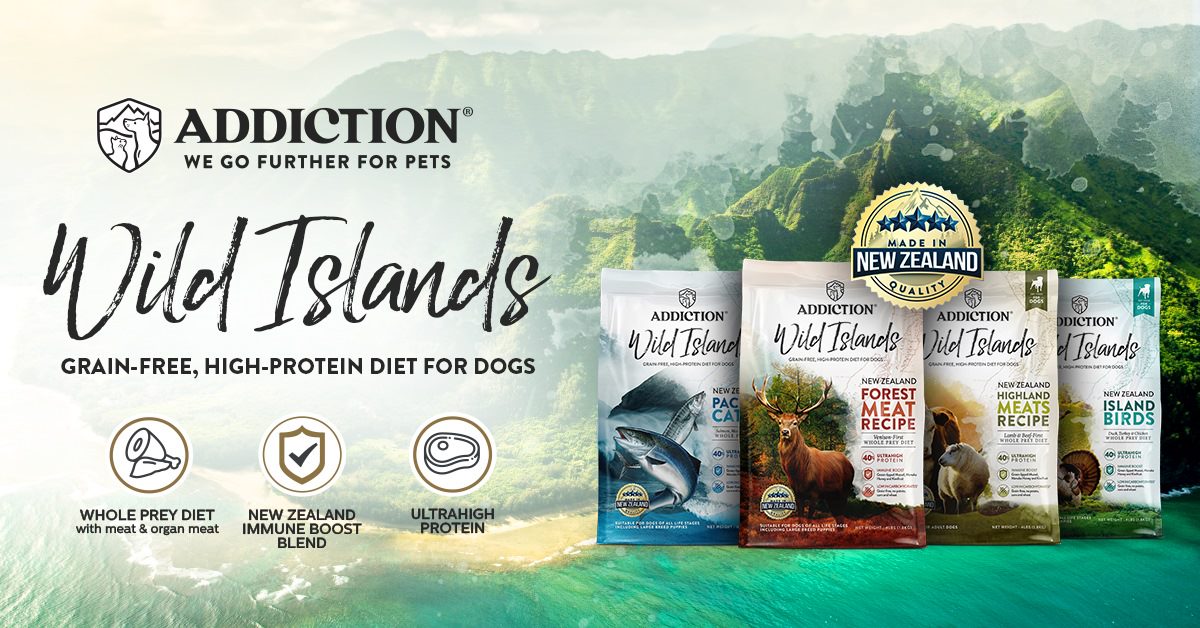How To Read Pet Food Labels & Ingredient Lists

With virtually unlimited options of pet food products available commercially, pet owners can easily become overwhelmed when shopping for pet food. There is so much information to decipher and advertising claims to sift through. In order to get the best nutrition for your pet, you should learn to read pet food labels and make a habit of checking them out before buying pet food. Pet owners who know what to look for in dog food or cat food can make the right decision regarding their pet’s nutrition.
What’s in a pet food label?
The pet food label contains vital information about the product. These include:
- The name of the product and the brand
- Quantity of the product when packed
- Guaranteed analysis
- Ingredients used
- The nutritional adequacy statement
- Directions for feeding
- Name and address of the manufacturer — usually include the contact details
- Calorie statement
Product Name
The product name can already give you a clue about the ingredients that are used in the formulation. Since many pet owners tend to consider specific ingredients when buying pet food, manufacturers will try to highlight that ingredient in the name of the product. There are 4 rules issued by The Association of American Feed Control Officials (AAFCO) regarding the wording that is used in the product name.
- The 95% Rule
If a product is named “Beef for Dogs” or “Lamb for Cats”, this should mean that at least 95% of the product should be the named ingredient; in this case, beef and lamb, respectively. Also, the main ingredient must be at least 70% of the total formulation when water added is counted. The remaining 5% is allotted for vitamins, minerals, and other ingredients that are included in small amounts.
- The 25% Rule
Pet foods that are labeled like “Lamb Dinner for Dogs” or “Salmon and Sweet Potato” mean that the named ingredient/s makes up 25% of the product. Common terms that are used include platter, dinner and entrée. If more than one ingredient is included in a product, the quantity of the named ingredient/s must be equal to 25% of the product.
- The “With” Rule
Pet food labels such as “Cat Dinner with Salmon” simply means that the named ingredient is only at least 3% of the product. As you can see, the word “with” dramatically alters the amount of the ingredient in the product.
- The Flavor Rule
If a product is labeled “Chicken Flavor Cat Food”, the specific percentage of the ingredient (chicken in this case) is not required to be indicated but it must be present in sufficient quantity to be detected. When printing the pet food label, the word “flavor” (in the example) must be of the same size, font, and color as the word “chicken”.
What is guaranteed analysis?
Pet food labels must include the percentage of crude fat, crude protein, crude fiber, and water. Check out the FDA website if you want to learn more about how to read guaranteed analysis, how to analyze pet food, and how guaranteed analysis of a product is calculated. If a product claims to be low fat or contains vitamin or mineral supplements, the amount or percentage (maximum and minimum) must be guaranteed.
Heka Grain Free Dog Food
How are ingredients listed on dog or cat food labels?
Many experts agree that the list of ingredients is the most important part of a pet food product label, thus pet owners should take time to read and analyze. This is true for dry food ingredients and wet food. The ingredients are listed based on weight, from highest to lowest. The high water content in meat like chicken, beef, and lamb makes these ingredients weigh more than dry ingredients such as grains, meals, and vitamins, so they are often listed first.
Each ingredient must be indicated individually; terms that are used to describe collective ingredients, such as “animal protein sources”, are not allowed. Also, the ingredients must be listed using the name that they are commonly known for.
By-Products — Are they bad addition to pet food?
Pet owners tend to steer clear of pet foods that contain by-products in their ingredients. But experts will tell you that by-products in pet food are not necessarily bad. The most common by-products that you can see in the list of ingredients include liver, bone, blood, and entrails that have undergone cleaning. These by-products are actually rich in essential vitamins and minerals. Knowing what cat food or dog food ingredients to avoid can help prevent unfortunate circumstances that can adversely affect your pet’s health and well-being.
The nutritional adequacy statement
If a pet food product is labeled “complete and balanced”, it should mention studies or tests that back up the statement. This should mean that the formulation adheres to specific standards set by the government for a complete and balanced ration for adult dogs. The nutritional adequacy statement often includes the appropriate life stage for which the product is formulated. The AAFCO has identified 4 life stages –gestation/lactation, maintenance, growth, and all life stages. Some products have labels that indicate a specific use or life stage, such as “puppy”, “senior”, or for a specific breed or size of a dog.
The statement of nutritional adequacy should follow a standard format so it would be easier for pet owners to compared products.
Feeding Directions/Instructions
Pet owners should take note that the feeding directions stated on the product label are just guidelines, not regulations. It is still recommended that you consult your veterinarian about how much your pet should consume every day. There are several factors that can influence the food intake of pets, such as the breed, environment, health status, and temperament, to name a few.
“Sell by” or “Best Used By” Statement
Certain ingredients in pet food can go rancid, thus manufacturers should include a “Sell By” or “Best Used By” statement in the product label. Expired pet food has lesser nutritional value and may harbor harmful bacteria or mold that can cause illness in dogs.
Before making any changes to your pet’s diet, it is recommended that you consult your veterinarian. Your pet’s diet and nutritional needs are among the important concerns that you should discuss with your veterinarian during your pet’s wellness checks.












